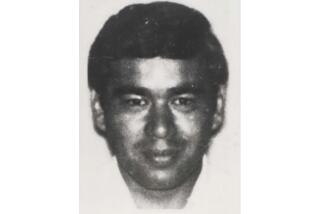1998 Approaches Record for Traffic Deaths in Nevada
- Share via
CARSON CITY — With less than a week to go before New Year’s Day, this year’s death toll on Nevada highways is ready to surpass the record 348 deaths set in 1996.
The record was tied Christmas Day when Alberto Garcia-Pacheco, 24, of Sparks was killed in a single-vehicle accident on Interstate 80 east of Sparks.
“Unfortunately, it has been a busy year for fatal crashes,” said Michael Perondi of the state Office of Traffic Safety.
Although there have been fewer fatal crashes in 1998, there have been more multiple deaths from the accidents, he said. A total of 303 crashes have accounted for the 348 deaths so far.
One of the worst accidents in state history occurred in August when two cars collided on U.S. 95 north of Winnemucca, killing eight people.
Alcohol continues to play a major role, with 109 fatal accidents and 126 fatalities appearing to be alcohol-related this year, Perondi said.
The total number of alcohol-related fatal crashes in 1997 was 130, with 140 fatalities.
“It looks like we’ll be in the 40% to 42% range again this year with alcohol-related crashes. It never changes,” Perondi said.
“You’ve got those idiots out there who think they can drink and drive. Unfortunately, innocent people die because of them.”
The 1999 Legislature is expected to consider a further crackdown on convicted drunk drivers, including a bill that would require them to display distinctive license plates, which Reno Assemblywoman Dawn Gibbons thinks would make them--and anyone driving nearby--more cautious.
Scott Magruder, a Nevada Department of Transportation spokesman, said higher speed limits established in Nevada in 1995 do not appear to be a factor in the number of traffic deaths.
Speed limits were raised on the state’s two interstate highways and on many state highways.
“We raised the speed limits to reflect the speeds that drivers were actually doing on the roads,” Magruder said.
Studies show motorists are traveling only 1 or 2 mph over the speeds driven before the increase, he added.
More to Read
Sign up for Essential California
The most important California stories and recommendations in your inbox every morning.
You may occasionally receive promotional content from the Los Angeles Times.













